1. Introduction
AOpen XCcube EZ65-II Mini Barebone System - Page 1
 AOpen
is known for it's wide variety of products, including DVD/CD drives, servers,
barebone systems, motherboards, graphics cards and other hardware. Following
the growing demand over the last year trend for small form factor (SFF)
PC, AOpen has also started a product line of mini barebone systems.
The term
barebone
system
usually refers to a system that already has pre-assembled, the basic, minimum
required components. For example,
it can include a case, PSU, motherboard, vga card, and other accessories that
are
already
assembled
or
built in.
AOpen
is known for it's wide variety of products, including DVD/CD drives, servers,
barebone systems, motherboards, graphics cards and other hardware. Following
the growing demand over the last year trend for small form factor (SFF)
PC, AOpen has also started a product line of mini barebone systems.
The term
barebone
system
usually refers to a system that already has pre-assembled, the basic, minimum
required components. For example,
it can include a case, PSU, motherboard, vga card, and other accessories that
are
already
assembled
or
built in.
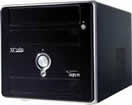 Now
some of you
may think that mini systems are just not worth the effort, considering
the sacrifices you need to be make in terms of performance, expandability,
stability, and last but not least, comparative prices. While that may
be true, great steps
have been made by manufacturers to close this gap between mini pc's and their
full sized "siblings". Let's not forget that nowadays, PCs do not
only serve enthusiasts or gamers. A large number of PCs today
are used as office or home computers for document and spreadsheet processing,
surfing the Internet, listening to music, watching videos, and so on. For this
category of applications, it may be that systems offering a smaller
size and good looks, while maintaining the ability to
connect extra peripherals, may be
more preferable than full sized PCs.
Now
some of you
may think that mini systems are just not worth the effort, considering
the sacrifices you need to be make in terms of performance, expandability,
stability, and last but not least, comparative prices. While that may
be true, great steps
have been made by manufacturers to close this gap between mini pc's and their
full sized "siblings". Let's not forget that nowadays, PCs do not
only serve enthusiasts or gamers. A large number of PCs today
are used as office or home computers for document and spreadsheet processing,
surfing the Internet, listening to music, watching videos, and so on. For this
category of applications, it may be that systems offering a smaller
size and good looks, while maintaining the ability to
connect extra peripherals, may be
more preferable than full sized PCs.
This review examines one of AOpen's products from their
mini barebone systems series, namely the AOpen XCcube EZ65-II Mini Barebone
System.
It is a system designed around the Intel family of processors, including
the latest Prescotts. As we will see in the course of this review, while small
in size,
it packs quite a lot of features in that small space, and with style as well.
Let's start with the specifications:
- Specifications
Model |
EZ65-II |
| SIZE WDH(mm) |
|
| WEIGHT(Kgr) |
|
| CHIP |
|
|
|
DDRx2 (DUAL CH) (2GB max)
|
|
|
|
|
Socket 478 (Northwood & Prescott)
|
|
|
|
|
|
|
|
|
|
|
|
|
|
|
|
AC97 5.1CH (SPDIF +COAX outputs)
|
|
|
|
|
|
|
|
|
|
|
1(Rear) / 2(Front)(6/4pins)
|
|
|
|
|
|
|
|
|
|
2. Retail Package
AOpen XCcube EZ65-II Mini Barebone System - Page 2
Packaging
-The box
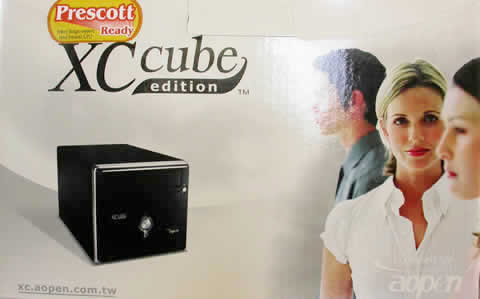
-The XCcube
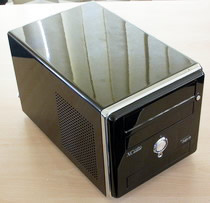
The AOpen XCcube EZ65-II arrived at our labs in a fairly
compact package that contained the unit, plus the accessories needed to assemble
it into a working pc.

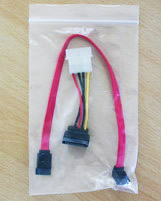
- XCcube case (black color) with motherboard and 275 Watt AOpen PSU
- User's manual
- Easy installation guide
- Software/drivers bundle
- A FDD cable
- Two Parallel ATA cables
- One
Serial ATA cable
- One Power adapter for the Serial ATA power connector
- One plastic bag with an assortment of screws
- One cleaning cloth
- One copper heat sink plus an 80 mm fan attached to CPU socket
Strangely enough, the package did not contain a mains power cable. The case
comes with the motherboard and the PSU already installed, thus minimizing the
effort needed to assemble the system. The IDE and FDD cables included are not
the usual flat ribbon type, but instead the harness type with the proper
color coding and each connector bears a descriptive label.
While all this may sound too much, it will greatly help people that are not
so experienced in assembling PC components. In general, the whole package
is designed so that even people with little experience can assemble a
working system.
Moreover, the AOpen XCcube EZ65 provides connections for almost every modern
protocol and interface available for connecting peripherals. The XCcube is
available in a multitude of colors such as white, red, gray, blue, and
black. The sample we received was black.
3. Exterior look
AOpen XCcube EZ65-II Mini Barebone System - Page 3
Exterior look

The exterior appearance of the XCcube is in a word, impressive.
The case is made of aluminum with a polished black finish
(or the respective color ordered). When looked at from a distance, it
does not look like a PC, and in fact, one can easily mistake it for a household
appliance. This shows the manufacturer's intentions, making
the XCube resemble more
a household appliance rather than a
computer.
There are vent holes on the left and right sides of the case
to facilitate airflow within the case. Bear this in mind when placing the
XCcube next to furniture, walls and other appliances,
keeping it well clear of obstacles that could obstruct the airflow.
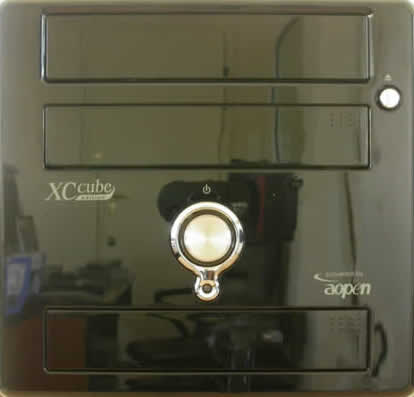
The front panel on the AOpen XCcube EZ65-II is made of black plastic. There
are, a large circular silver-colored on/off power button and a blue HDD activity
LED located in the center. The power on/off button is highlighted with blue
around the rim. AOpen has made sure that any installed optical and hard drives
or
card-reader does not spoil the appearance of the front panel - the
bays that are accessed from outside are concealed with covers. The cover
for the optical
drive has a spring
loaded system that automatically opens and closes when the drive's tray opens
and closes. The case also has an eject button right next to the
optical device
cover on the right side, but make sure you align it properly when installing
the drive for it to work properly.
While it is a nice idea to conceal the real drive tray with this cover,
installing optical drives that do not have a tray will make inserting and
ejecting
discs from the XCcube very difficult. As for the Floppy Drive/Card Reader
cover,
this does not open automatically, but instead opens by pushing the upper
right side of the cover. By adopting the use of covered bays, AOpen
has made sure
the design of the XCcube's front panel remains unspoiled after installation
of any drives of differing colors and styles. This is a big advantage of
this barebone system. The only thing we could find lacking was the absence
of a reset button. Some might say that it is not necessary,
but we feel it could come in handy in some situations. By the way, the AOpen
XCcube EZ65 does not come with a
floppy
drive or card-reader, devices often included with barebone systems
from other manufactures.

The front panel connections are also located in a concealed bay at the
bottom. The cover opens and closes exactly in the same way as
the Floppy
Drive cover. The connections from right to left are two FireWire (6-pin
and 4-pin) and two USB 2.0 ports, microphone, headphones and an optical
SPDIF
output.
Moving on from the XCcube's front, let's now have a look at what lies at
the rear:
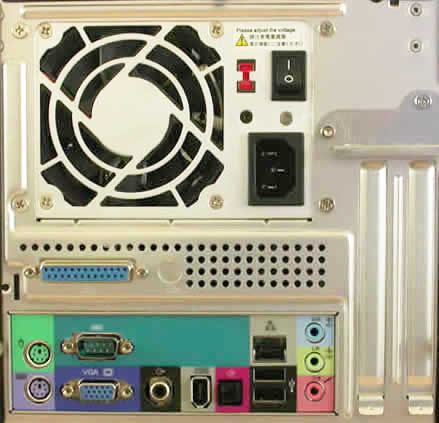
Here we can see the rear side with the PS unit with its 80mm exhaust fan, a switch
for selecting between 110/230V mains input voltage, and the power cable
input plug.
The connectors located at the bottom from right
to left are 3 audio mini jacks, an RJ-45 Ethernet connection, 2 USB 2.0 connections,
an Optical SPDIF input, a six pin Firewire port, SPDIF output, an RS-232 port,
a parallel port, two PS/2 ports, and a D-SUB analog video output.
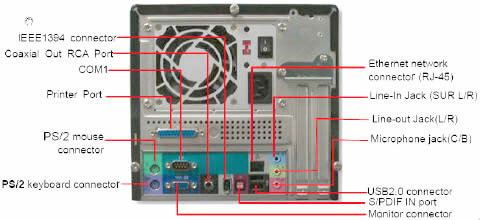
Considering the number of connections the XCcube has
to offer, the majority of users will be more than satisfied. There
is even
a parallel port, which is omitted by many manufacturers, since most current
printers connect through a USB port. There are three firewire ports and
one is 4-pin so that you can connect your DV camera directly
without a converter cable. The optical inputs/outputs offered are a big plus,
since even full sized system motherboard manufacturers, do not include them
in their standard package and they have to be bought and installed separately.
The only complaint we have is with the number of offered USB ports, which
are only four when it could have been
six since
the chipset
supports them. Another omission, which unfortunately all barebone systems
manufacturers follow blindly, is the lack of any DVI or TV outputs. So if
you need any of these outputs, a separate VGA card must be installed.
4. Interior look & Assembly
AOpen XCcube EZ65-II Mini Barebone System - Page 4
Interior look & Assembly
To transform the AOpen XCcube EZ65-II into a working computer system, the CPU,
memory, hard drive and an optical drive are needed. You can optionally install
a
PCI expansion card or an AGP graphics card, or use the 3.5" bay in the
front of the case to install a floppy drive or a multimedia card reader. Whatever
you may need to do with the XCcube, bear in mind that installation is extremely
easy and with minimal or no tools needed. You can manage to assemble all the
necessary parts with a simple philips screwdriver. Opening the case or removing
the hard drive bay can be done with no tools at all, just your bare hands.
As you can see for yourselves, there are no loose cables hanging around inside
the case, with everything fastened neatly onto the case in order to maximize
the
working space and thus make installation easier. It also facilitates better
airflow around the case.
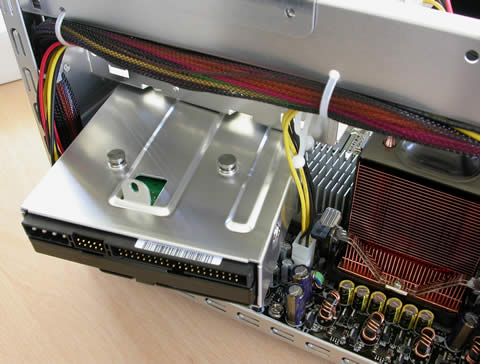
This is the hard drive bay, which is detachable and is fastened
onto the case with one screw
The case has enough space to accommodate full length or smaller
length optical drives.
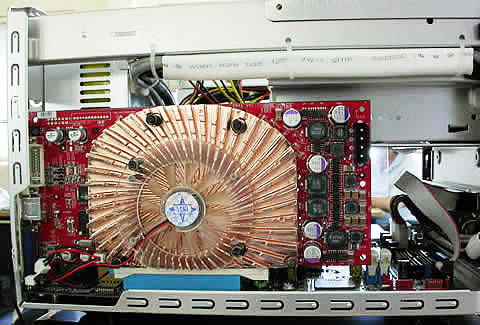
We also installed an extra AGP card to see if it will fit in
the case. There was no problem with the installation. Just bear in mind that
if you are thinking of installing a graphics card with a huge cooling system
that requires more than one slot, the XCcube case will not be able to accommodate
it. As a matter of fact, things were already a bit packed with one "normal" size
vga card, as it seats very close to the case cover. Of
course the vent holes in the cover provide enough cool air for the card,
but the
card itself blocks the flow of air in the case.

The power supply unit (PSU) is also manufactured by AOpen and and supplies
275W output power. While this might seem inadequate, this PSU
managed to
handle the test system we assembled with an Intel P4 3.2GHz and an Nvidia FX
5950 Ultra. The PSU features a 20-pin (main) and a 4-pin (12V) power cable,
three 4-pin 12V and one 5V connectors (Molex). In the package is included
a power adapter for SATA drives. Also, the PSU is universal and can work
with both 110V and 230V input
voltages by flipping a slide switch located at the rear of the case.
5. Motherboard
AOpen XCcube EZ65-II Mini Barebone System - Page 5
Motherboard
For this class of mini PCs, new types of motherboards have to be developed.
These motherboards have to be somewhat smaller in footprint in order
to fit in the smaller cases. This is quite challenging for the manufacturers
of
these
systems, since they have to minimize the space and at the same time try to
preserve as many of the features as possible.
The motherboard that is used inside the XCcube EZ65-II is the UX4SG-1394-II, which is specially made by AOpen for the XCube.
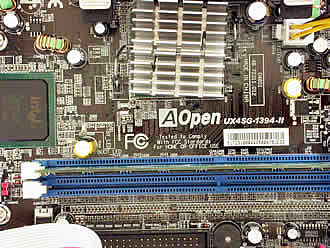
The motherboard features Intel's 865G chipset, which is the standard 865 chipset
with an integrated graphics adapter. It supports socket 478 processors with
Northwood or Prescott processors at 400/533/800 FSB, with or without Hyperthreading.
For more information, please consult AOpen's list of supported processors.
The motherboard also features two DIMM slots for memory expansion. DDR
266/333/400 DRAM modules are supported, and dual channel memory configuration
is supported
as well. Thus, the maximum amount of memory the system can handle is
2GB.
Due to its small size, the XCcube cannot offer many upgrade/expansion
options. Nevertheless, the motherboard features one PCI expansion slot,
and one AGP 8x port. While they might seem inadequate, bear in mind that
the board already offers many things on board, such as Firewire, Gigabit
LAN, integrated graphics adapter, and integrated sound card with coaxial
and SPDIF
outputs. The integrated graphics adapter is the Intel Extreme Graphics 2,
but its 3D performance is far from being "extreme" as its name
suggests.
The ICH5 chip that is used as a SouthBridge supports two ATA-100 channels,
two Serial ATA channels (no RAID support), and 6 USB 2.0 ports. On the case,
only four of the USB connectors are available, two at the front
and two at the back. The remaining two are offered via onboard connectors.
The remaining functionality on the board is offered through the other
chips. The board features Gigabit Ethernet using a Broadcom PCI controller.
It
also
features a Firewire controller from Agere that offers 3 ports (two at
the front and one at the back). The 5.1 channel sound is offered by an
AC'97 codec made by Realtek.
6. Bios & overclocking
AOpen XCcube EZ65-II Mini Barebone System - Page 6
Bios & overclocking
The XCcube power-on screen.
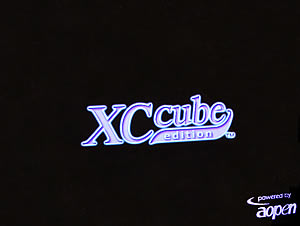
The Phonix-AwardBIOS BIOS main
screen.
The Silent Bios/HW Monitor screen.
In the above screenshot, we can see the various values for important
system parameters, such as CPU and system temperatures, rotation
speeds for the fans and onboard voltages. You
can also configure how the CPU and system fans behave depending on
corresponding temperatures. The first option, "CPU
Warning Temp." sets the temperature the CPU has to reach before the motherboard
sounds an alarm to let the user know the CPU is overheating. The value can
range from 50° to 80° Celsius.
The second option, "Fan Control", changes the behavior of the two
fans with regard to their rotation speed (CPU and System
fan). The possible settings here are "Smart Control" and "Full
Speed".
In the first mode, the bios increases/decreases the fan's rotational speed
in relation to the corresponding temperature. In this manner, each
fan rotates as fast as it is necessary and does not operate at full speed all
the time,
resulting
in less noise being produced. In "Full Speed" mode, the fans always
rotate at maximum speed, thus providing maximum cooling effect, and of course
producing more noise. While this might be considered by many the safest option,
bear in mind that the built-in fan for the heat-sink
produces a fair amount of noise at full speed, and the XCcube is far from being
silent.
This is the Frequency/Voltage Control screen, from where we can overclock the XCcube.
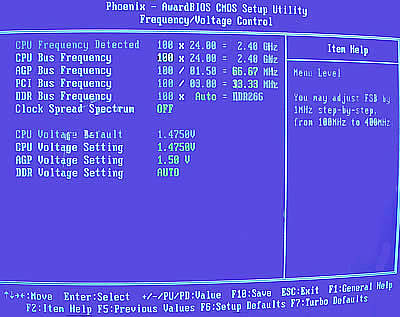
In this screen, we can change the CPUs FSB frequency and
thus, overclock the CPU to a higher frequency. DDR frequency can be selected
as well, so you can easily select 1:1 or different RAM/FSB ratios to achieve
better overclocking results. The BIOS locks the AGP/PCI bus frequencies,
so these always stay at their default speed of 66 and 33 Mhz, respectively.
We can also tweak the CPU voltage, the AGP and the DDR voltage settings to
push the system's overclocking abilities.
To our surprise, without much effort, we managed to bump up the FSB to 230
MHz with 1:1 DDR/FSB ratio, thus clocking our test system's Intel Pentium 4
from 2.8GHz up to 3.22GHz. That is a 15% improvement, and with some tweaking
it will definitely get much higher. The system was quite stable to work with,
and we didn't experience any crashes or lockups during our tests. We were also
very pleased to see something similar to PAT (Performance Acceleration
Technology) in the BIOS Setup, called Performance Boost Engine. To be honest,
we expected
the XCcube to be able to overclock only a little, and perhaps not at all,
but this was a pleasant surprise and a big plus for the XCcube.
7. Cooling
AOpen XCcube EZ65-II Mini Barebone System - Page 7
Cooling
Keeping the system cool is probably one of the most difficult problems
a designer of an SFF system has to face. Due to the small size, components
have to coexist in a very confined space and the various cables and any extra
boards can make it difficult to design for proper airflow and cooling.
Things can be improved by strategically
placing
fans in
the case,
but this increases the noise the system produces. And regardless of whether
the system is an SFF PC or a full sized PC, nobody wants a noisy box.
So especially in
the case of the XCube, which is not only destined to occupy for the
office desk, but also in our living room, noise is an important issue.
The AOpen EZ65-II uses a standard cooling system with an active CPU cooler,
and an 80mm PSU fan. there is also a passive aluminum heatsink that
is mounted on the North Bridge chipset.
The CPU heat-sink is made of copper, an improvement over the previous
EZ65 model, which only had a copper sole with the rest made of aluminum.
While this
makes
the cooler heavier, copper is a better heat conductor than aluminum. As you
can see from the photos, the cooler features a fan on the side, which sucks
cool air from the left side of the case, passes through the cooler and sends
it to the right side of the case. Also, on both sides of the case there are
vent holes that facilitate the airflow. The CPU fan can reach rotational speeds
of 6000 RPM and can be quite noisy at full speed, exceeding the acceptable
margin of noise for some people. If this annoys you, there is an option in
the system's BIOS that allows the system to dynamically control the fan's
speed.
The heat-sink can be very easily mounted/unmounted without requiring a lot
of force to be applied or the need for special tools to be used. There are
four clips at the four corners of the
heat-sink that release when pushed.

8. Conclusion
AOpen XCcube EZ65-II Mini Barebone System - Page 8
Conclusion

Comparing the XCcube to a full blown PC, there is no
area where it is found lacking, except perhaps only in the case of expansion.
Of
course,
this
is the price someone has to pay for fitting all these components into a small
space.
Performance wise, this barebones mini system was found lacking
in the graphics department, and specifically the integrated graphics adapter.
Clearly, the Intel integrated solution
cannot
be compared with the graphics cards that are available on the market today.
Nevertheless, it is a good solution for people that want to use their computer
for everyday
office
tasks, watch movies, and play the occasional game. If you want anything more
than that, in terms of graphics performance, you have to add an extra VGA card.
You also need an extra VGA card if you plan to connect the XCcube to
your TV since the card does not feature a tv-out video connection.

The XCcube EZ65 is very stylish, offers functionality that is unexpected
from something at this small size. It is very stable and its smart design
makes it easy to assemble the system by yourself. It's retail price is around €240.
And some advice: get it in black!
- The Good
- Small size
- Stylish design
- Complete front panel inputs/outputs
- Good cable assembly in the case
- Good overclocking capabilities
- Copper heat sink and fan included in package
- Temperature controlled fan speed (via BIOS)
- Easy to assemble/disassemble with minimal tools needed
- Superbly illustrated manual/installation instructions
- The Bad
- Limited space for adding AGP graphics cards with large heatsinks/fans
- Average onboard VGA with no tv-out (shared memory only 16MB)
- No power cable included in the package
- Noisy when the CPU is under high usage
- Airflow within the case obstructed with the addition of AGP card